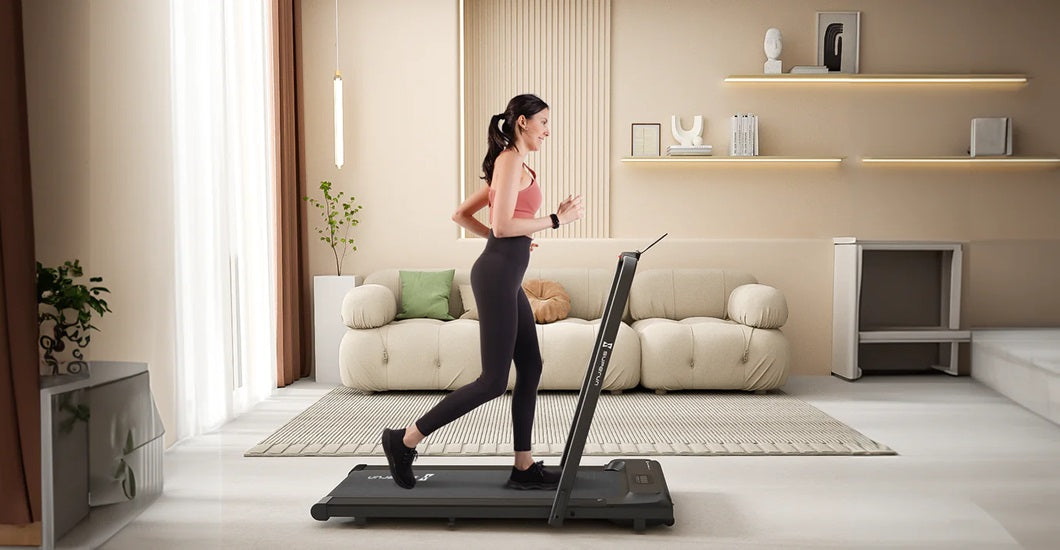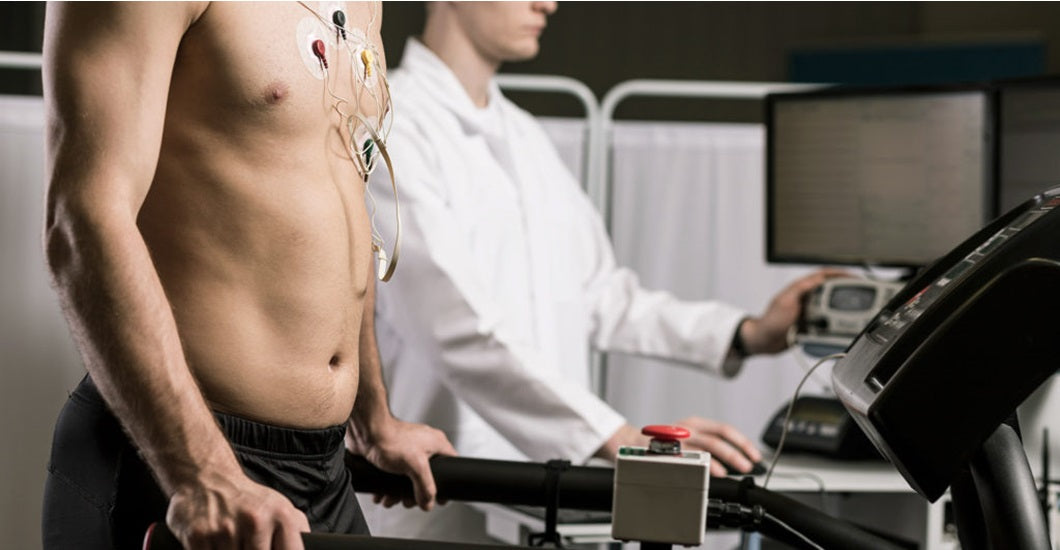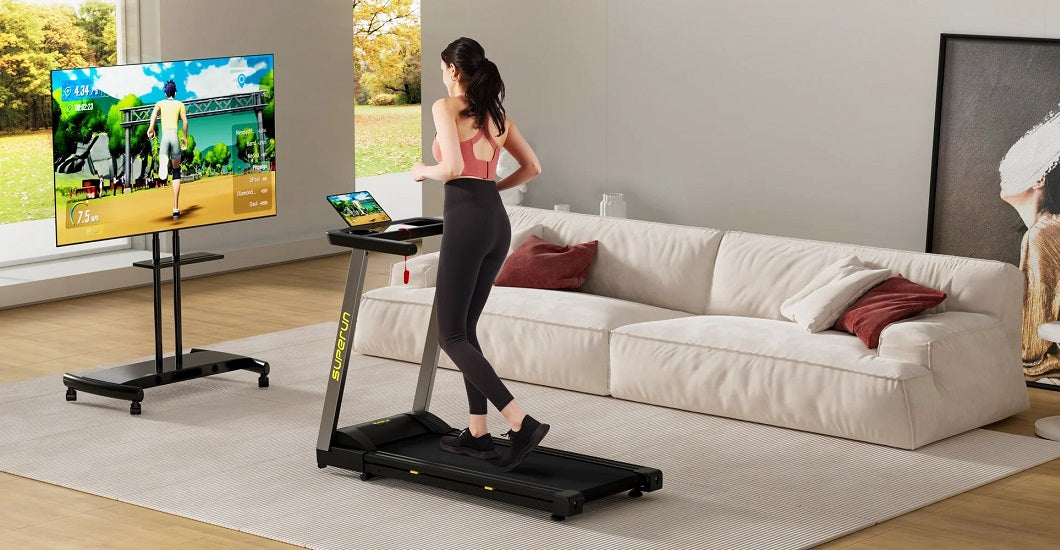Running on a treadmill has become an increasingly popular exercise option in today's fast-paced world. The convenience and versatility of treadmill running make it an attractive choice for individuals seeking to improve their fitness, whether they are seasoned athletes or beginners taking their first steps toward a healthier lifestyle. In this guide, we will explore the vital aspects of running on a treadmill, from perfecting your form to staying motivated and preventing injuries.
The Importance of Running on a Treadmill:
Running on a treadmill offers a host of advantages that can positively impact your health and fitness journey. Whether you are looking to build endurance, shed a few pounds, or simply maintain an active lifestyle, running on a treadmill can be a valuable tool to help you reach your goals. Here are some key reasons why running on a treadmill is essential:
- Accessibility:
Treadmills are readily available in gyms, and many people have them in their homes. This accessibility means you can run regardless of weather conditions, time of day, or location.
- Controlled Environment:
Treadmills provide a controlled and predictable surface to run on, reducing the risk of injury compared to outdoor running on uneven terrain.
- Customization:
Treadmills allow you to adjust the speed, incline, and various settings to tailor your workout to your specific fitness needs.
- Progress Tracking:
Many treadmills come equipped with technology that allows you to monitor your progress, and track distance, time, and heart rate, which can be motivating and help you set and achieve your fitness goals.

Benefits of Running on a Treadmill:
Running on a treadmill offers a multitude of benefits that can help you transform your fitness routine into a rewarding and effective experience. Here are some of the key advantages:
- Consistency:
Treadmills provide a consistent running surface, which can help you maintain a steady pace and reduce the impact on your joints, making it suitable for long-term training.
- Weather Independence:
No more worrying about rain, snow, or extreme heat – with a treadmill, you can run comfortably in any weather conditions.
- Safety:
Running indoors on a treadmill eliminates the risks associated with outdoor running, such as traffic, uneven terrain, or potential hazards.
- Controlled Workouts:
Treadmills allow you to precisely control your workout by adjusting speed, incline, and workout programs, enabling you to target specific fitness goals.
- Variety:
Treadmills offer a variety of workout options, from interval training to hill workouts, ensuring that you can keep your workouts interesting and challenging.
In the following sections of this guide, we will delve deeper into the world of treadmill running, covering everything from proper running techniques and workouts to injury prevention and mental strategies to keep you engaged and motivated. Whether you're a seasoned treadmill runner or a beginner taking your first steps, this guide will help you make the most of your treadmill running experience and achieve your fitness aspirations.
How to choose a suitable treadmill?
When it comes to choosing the right treadmill for your running needs, several factors must be considered. The decision often boils down to whether you need a home treadmill or plan to use a gym treadmill. Additionally, there are various features and specifications to take into account. Let's explore these aspects in more detail:
Home Treadmill vs. Gym Treadmill:
Home Treadmill:
- Convenience:
Home treadmills provide the convenience of working out at your own pace and schedule without the need to commute to a gym.
- Privacy:
You can exercise in the comfort and privacy of your home, which is particularly appealing to those who may feel self-conscious at a gym.
- Consistency:
You have control over the cleanliness and maintenance of your home treadmill, ensuring a consistent and safe workout environment.
- Family Use:
Home treadmills can be used by multiple family members, making it a practical investment for the entire household.
Gym Treadmill:
- Variety:
Gyms often have a range of treadmill models with different features and settings, providing variety in your workouts.
- Professional Guidance:
Gym staff can offer guidance and assistance with treadmill use, ensuring you make the most of your workouts.
- Social Experience:
Working out at the gym can be a social experience, with the opportunity to connect with others who share your fitness goals.
- No Maintenance:
Gym treadmills are maintained by gym staff, eliminating the responsibility of upkeep.
Choosing between a home and gym treadmill depends on your personal preferences, lifestyle, and fitness goals. Those who prefer convenience and privacy may lean toward a home treadmill, while those who enjoy the gym environment and access to professional guidance may opt for a gym treadmill.

Features to Consider:
When selecting a treadmill, it's crucial to consider various features and specifications to ensure it meets your specific needs. Here are some key features to evaluate:
- Motor Power:
The treadmill's motor power determines its performance. Look for a motor with sufficient horsepower (HP) to support your running speed and intensity.
- Running Surface:
The size of the running deck is important. A wider and longer deck provides more comfort and safety during your run.
- Incline Range:
Check the treadmill's incline options. Incline training can help you target different muscle groups and add variety to your workouts.
- Speed Range:
Consider the maximum speed the treadmill can reach, especially if you're training for higher-speed runs.
- Cushioning System:
A good cushioning system can reduce the impact on your joints and make your runs more comfortable.
- Console and Display:
Look for an easy-to-use console with clear displays for tracking your workout progress.
- Programs and Workouts:
Some treadmills come with pre-programmed workouts and the ability to customize your own.
- Heart Rate Monitoring:
Treadmills may offer heart rate monitoring through built-in sensors or compatibility with chest straps.
- Foldability:
If you have limited space, consider a treadmill that can be folded for storage.
- Warranty:
Pay attention to the warranty, as it reflects the manufacturer's confidence in their product's durability and reliability.
- Budget:
Determine your budget and find a treadmill that offers the best features within your price range.
Selecting the right treadmill involves assessing your personal needs, space, and budget, and then carefully comparing different models to find the one that best aligns with your fitness goals and preferences. Whether you choose a home or gym treadmill, the right selection will greatly enhance your treadmill running experience.
Running Techniques On A Treadmill
Running on a treadmill requires proper form and technique to maximize your workout's effectiveness and minimize the risk of injury. Here are key aspects of running technique to consider when using a treadmill:
Posture and Body Positioning:
- Proper Alignment:
Stand upright with a straight posture, keeping your head, shoulders, hips, and ankles aligned.
Engage your core muscles to support your spine and prevent slouching.
Avoid leaning forward or backward, as this can strain your lower back and affect your balance.
- Avoiding Common Mistakes:
Avoid looking down at your feet or the console, which can lead to poor posture and strain on your neck.
Maintain a relaxed but engaged posture, avoiding unnecessary tension in your upper body.
Stride Length and Cadence:
- Finding Your Optimal Stride:
Strive for a comfortable and natural stride length, which may vary from person to person.
Avoid overstriding (extending your legs too far in front of you) as it can lead to excessive impact and discomfort.
- Monitoring Your Cadence:
Aim for a cadence (steps per minute) of around 170-190 for efficient running.
Use a metronome or treadmill setting to help you maintain your desired cadence.
Hand Positioning and Arm Movement:
Keep your arms bent at a 90-degree angle.
Swing your arms naturally, in sync with your stride, to maintain balance and rhythm.
Avoid crossing your arms over your body, as this can lead to inefficient movement and reduce stability.
Breathing Techniques:
Breathe deeply and rhythmically. Inhale and exhale through your nose and mouth to ensure a steady flow of oxygen.
Sync your breathing with your stride or cadence to establish a comfortable and sustainable rhythm.
Avoiding Overstriding:
Overstriding, or landing with your foot too far ahead of your body, can lead to inefficient running and increased risk of injury.
Focus on landing with your foot directly under your hip, maintaining a midfoot strike or forefoot strike.
Staying Centered on the Treadmill:
Stand in the center of the treadmill belt to avoid unnecessary friction on the sides.
Avoid leaning to one side or holding onto the handrails, as it can lead to improper running form.
Incorporating these running techniques into your treadmill workouts can help you run more efficiently, reduce the risk of injury, and enhance your overall experience. Regular practice and mindful attention to your form will contribute to improved running performance and a more enjoyable treadmill running routine.

Conclusion
In this comprehensive guide, we've explored the many facets of running on a treadmill, providing you with valuable insights to help you elevate your treadmill running experience and reach your fitness goals. From selecting the right treadmill and mastering running techniques to staying motivated and injury-free, you now possess the knowledge and tools to run better on a treadmill.
Remember that running on a treadmill is not just about physical exertion; it's a holistic approach that involves understanding your body, fine-tuning your form, and staying mentally engaged. As you conclude your journey to becoming a better treadmill runner, here are some key takeaways to keep in mind:
- Proper Technique Matters: Perfecting your running technique is essential. Focus on posture, stride length, cadence, arm movement, and breathing to run efficiently and reduce the risk of injury.
- Variety Keeps It Interesting: Experiment with different treadmill workouts, including interval training, hill runs, and endurance sessions. Variety not only prevents boredom but also enhances your overall fitness.
- Safety First: Prioritize your well-being by wearing suitable footwear, stretching, and ensuring you're well-hydrated before and after each treadmill run.
- Set and Monitor Goals: Define clear fitness objectives and regularly track your progress. The sense of accomplishment you feel as you achieve your goals will keep you motivated.
- Listen to Your Body: Pay attention to any discomfort or pain. If something doesn't feel right, it's okay to pause or adjust your workout. Your health is paramount.
- Stay Engaged Mentally: Running on a treadmill can sometimes be monotonous, so use music, podcasts, or visualization to keep your mind active and motivated.
- Consistency is Key: Regular, consistent treadmill workouts are the foundation of improvement. Stick to your schedule, even on days when motivation wanes.
- Balance Treadmill and Outdoor Running: Consider incorporating outdoor running into your routine to enjoy fresh air, different terrains, and varied experiences.
- Join a Running Community: Whether in-person or online, a supportive running community can provide motivation, tips, and a sense of belonging.
In conclusion, running on a treadmill is more than just a physical activity; it's a journey of self-improvement. Embrace the challenges, celebrate your successes, and always keep your health and well-being at the forefront of your running adventure. With the knowledge and strategies you've gained from this guide, you're well-equipped to run better on a treadmill and embark on a lifelong pursuit of better health and fitness.






Leave a comment
All comments are moderated before being published.
This site is protected by hCaptcha and the hCaptcha Privacy Policy and Terms of Service apply.